
Diseases caused by human papillomavirus have been known for a very long time. First of all, these are all types of warts, from which every sixth person on the planet suffers. However, the pathogen itself has attracted the attention of scientists only in the last 30-40 years. The group of human papillomaviruses (Human papillomavirus - HPV) was identified as a separate species in 1971. Since then, scientists have classified HPV types and established their relationship with many pathologies, but research is still ongoing. At the same time, doctors are looking for more effective ways to fight this insidious virus.
What is HPV?
The human papillomavirus is a large group of viruses that contain DNA and exhibit an affinity for the epithelial cells that form the skin and mucous membranes. Today, about 170 types of the virus have been discovered, and about 60 are well studied.
Some papillomaviruses are dangerous because of their oncogenic activity, i. e. they increase the risk of malignant tumors. Since the 1980s, research has been conducted that proves that infection with human papillomavirus plays a role in the development of adenocarcinoma and squamous cell cervical cancer (the latter type of tumor is much more common). In 99% of cases, oncology patients are diagnosed with HPV infection and cells specifically modified by the virus.
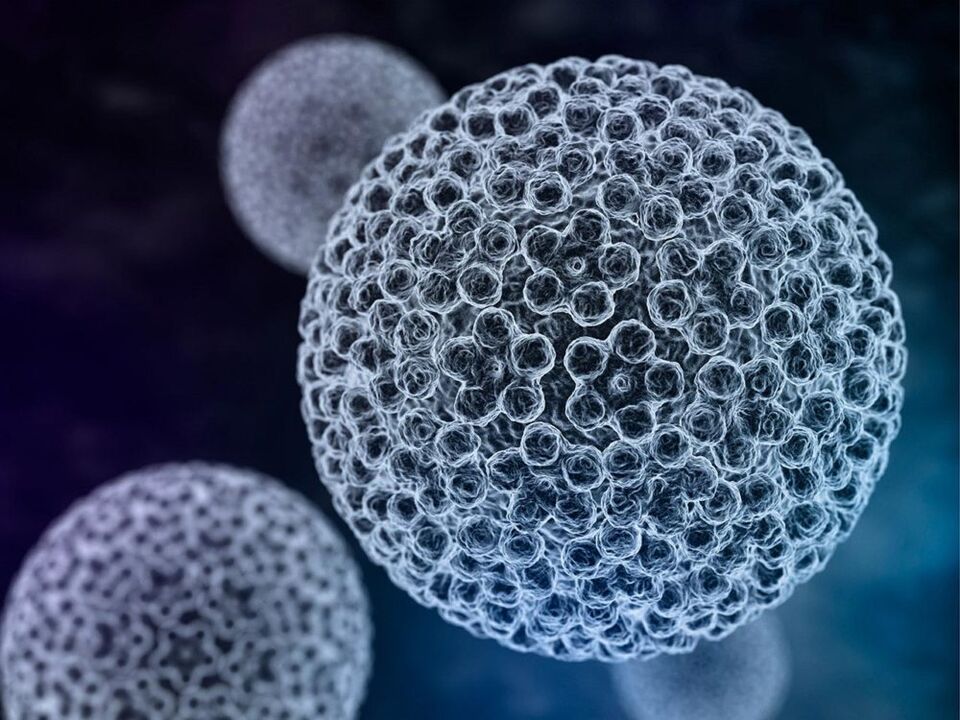
The papilloma virus penetrates the epithelial cells. After its penetration into the genome, replication (reproduction of the DNA of the virus) begins. In this case, the cells divide in an atypical way and their structure changes, which can be seen if you do a cytological analysis.
The papilloma virus manifests itself in specific changes in the epithelium:
- on the skin of the body (vulgar and flat warts, papillomas);
- on the epidermis and mucous membranes of the genital organs (genital warts, bowenoid papulosis, cervical neoplasia, cancer);
- on the mucous membranes of other organs (oral cavity, larynx, bladder, rectum, bronchi, etc. ).
Changes in the first group are caused by non-oncogenic viruses. They are unpleasant, but not dangerous. The third group of manifestations is considered atypical and is recorded relatively rarely.
All types of viruses are divided into three groups:
- with low oncogenic risk (3, 6, 11, 13, 32, 40, 41, 43, 44, 51, 61);
- moderate risk (30, 35, 45, 52, 56);
- high risk (16, 18, 31, 33, 39, 59, 64).
Common types 6 and 11 cause multiple anogenital warts and mild cervical neoplasia. Their detection in a pregnant woman requires attention, as there is a risk of developing laryngeal papillomatosis in a newborn in contact with the mother's mucous membranes during childbirth. Therefore, when planning a pregnancy, women and men should undergo an HPV test.
The detection of viruses of the third group in the analysis results requires special attention, since the risk of tissue degeneration is high and the patient needs advanced diagnostics.
Methods of infection
The most common route of infection is sexual. Almost all sexually active adults are diagnosed with HPV. But most often the infection is transient - the body copes with it and after a year and a half the virus is not detected in tests. Only occasionally does HPV cause minor clinical manifestations and, in extremely rare cases, cancer that develops many years after infection (10-15).
Other routes of infection:
- Contact– by touch. This is how you can get warts;
- Homemade.The virus remains viable in the external environment for some time. Contagion is possible in a bathroom, swimming pool and other public places. The pathogen penetrates through micro-damages in the skin.
- Vertical.The virus can be transmitted from mother to child during childbirth. In this case, the newborn sometimes develops papillomatosis of the larynx and upper respiratory tract. In some cases, the baby is affected by genital warts.
- Autoinfection.Human papillomavirus (PVI) infection can spread from one place to another in the body, for example by shaving or scratching warts.
Stages of development of infection
After infection, the latent stage begins - latent or carrier of PVI. At the same time, the virus is inactive, does not manifest itself clinically and is not detected during cytological and histological examination, since it does not reproduce its copies and does not change the epithelial tissue. However, its DNA can be detected by PCR analysis.
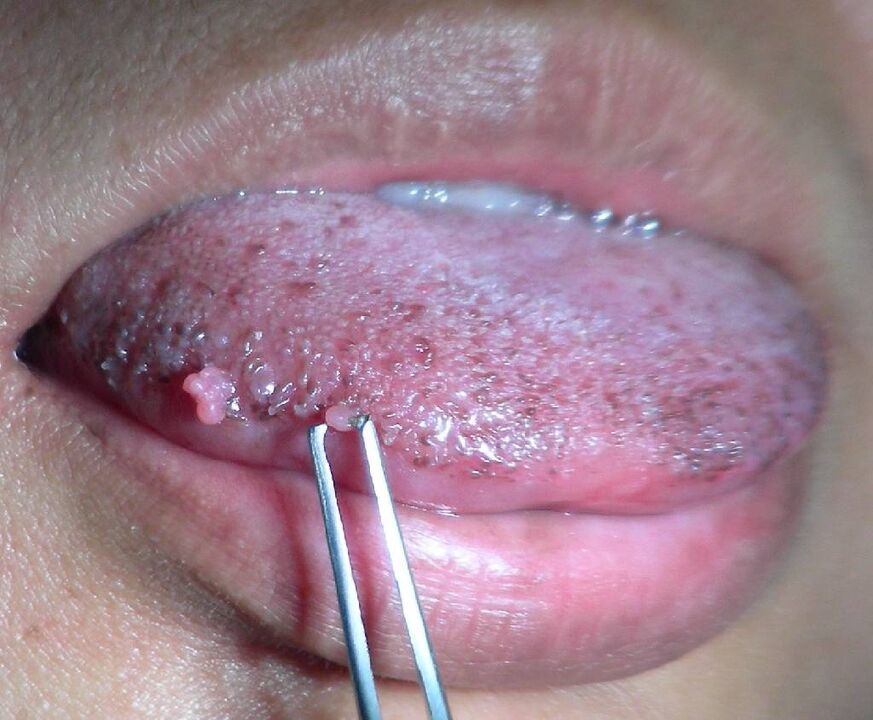
important!
It is not at all necessary for the latent stage to develop into disease. Perhaps the person himself will remain only a carrier and will not have clinical manifestations.
In the second stage (subclinical), tissue changes have already begun, but they can still be minimal and not bother the person. However, when taking a cytological analysis, atypical cells are found, and during examination, single condylomas or small papillomas can be seen.
The third stage is clinical (manifest). The symptoms are pronounced and the disease requires treatment. More often, PVI manifests itself latently or subclinically, and the obvious signs appear under the influence of provoking factors.
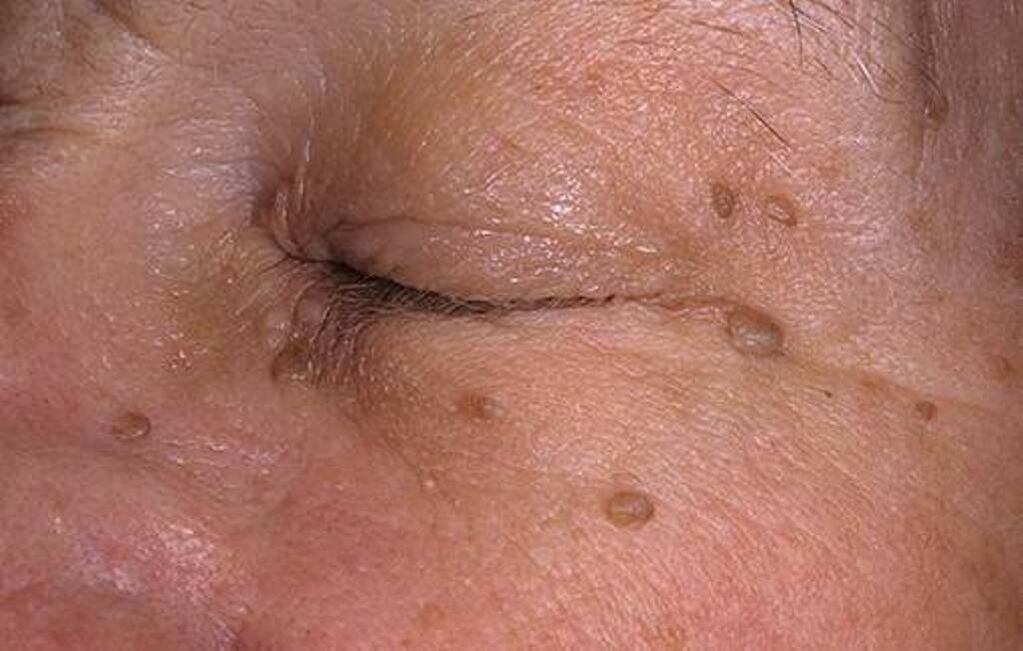
The fourth stage (mutagenesis) is a sad consequence of PVI. During this period, the cells become malignant and the carcinoma begins to grow.
Causes of papilloma virus activation
PVI infection occurs very easily, but the human immune system copes well with it, and often the virus disappears on its own. A persistent infection that periodically worsens and does not leave the body is a sign of a reduced immune response.
The following factors contribute to this:
- Age. Healthy adults are less likely to suffer from PVI. More often - children, adolescents and the elderly;
- Long-term chronic diseases that weaken the body;
- Endocrine pathologies (diabetes mellitus, thyroid disease) and hormonal fluctuations (pregnancy, menopause);
- Constant stress, prolonged psycho-emotional stress;
- Poor nutrition, strict diets, lack of vitamins, minerals and complete proteins;
- Severe dietary obesity and a sedentary lifestyle;
- Taking drugs that suppress the immune system, exposure to radiation, chemotherapy;
- Primary and secondary immunodeficiencies, HIV;
- Beginning of sexual life before the age of 16 and indiscriminate intimate contacts;
- Co-infection with other sexually transmitted infections;
- Gynecological procedures leading to mechanical damage to the mucous membrane of the cervical canal (abortion, curettage, IUD installation, etc. ).
The incubation period for PVI is highly variable. The pathogen can remain in a latent, inactive state for a long time (from 3 weeks to several years), so it is impossible to accurately determine the time and circumstances of infection. A person can be infected with several types of virus at once and constantly be re-infected, for example, from a sexual partner.
HPV diagnosis
The first stage of diagnosis is always an examination by a doctor and collection of anamnesis. Women are examined by a gynecologist, men by a urologist or dermatovenerologist. When exophytic genital warts are found, the diagnosis is obvious, since these neoplasms are characteristic only of PVI.
Acetic acid test
If the disease is in a subclinical stage, small condylomas may not be visually visible. Therefore, a test with acetic acid is performed - after treatment with it, the neoplasms turn white and stand out against the background of the surface.
The same thing happens with the mucous membrane of the cervix (examined by colposcopy) - the identification of white areas on it shows that the epithelium in this place has changed. It is from this surface that a cytological smear is taken or a biopsy is performed.
If the acetic acid test is positive, monitoring and control is necessary after six months, as the disease may progress. On the other hand, the virus can go into a latent state, after which the manifestations will disappear.
Schiller test
It is performed as part of an extended colposcopy after an acetic acid test. In this case, tissue sections previously treated with vinegar are stained with a solution of iodine in glycerin. Normal cells absorb this solution and become uniformly brown. In atypical cells, the processes of glycogen accumulation are disturbed and they do not absorb the solution. A mosaic coloring appears, its characteristic features suggest a diagnosis.
Cytological smear
It is otherwise called the PAP test after its inventor, the Greek doctor Papanikolaou. For the study, a scraping is taken from the mucous membrane of the cervix (urethra in men) to obtain epithelial cells for analysis. The biomaterial is applied to a glass slide, fixed with alcohol, stained and examined under a microscope.
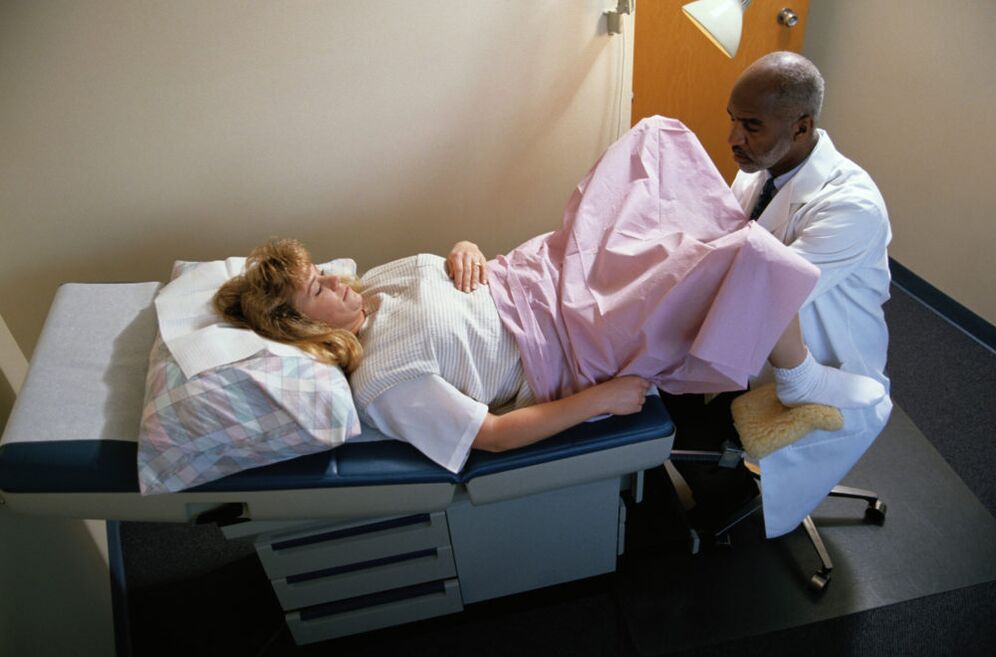
The interpretation of the results is carried out by a doctor, since other data are also taken into account: results of cytology, PCR analysis, tests for other infections, presence of inflammation in the vagina, etc. A result of class 1-2 is considered negative, that is, no morphological changes caused by the virus were detected.
For grade 3, additional research methods are prescribed, but grades 4 and 5 are a possible sign of neoplasia or grade III cancer.
PCR analysis
A very sensitive test that detects the presence of viral DNA in epithelial cells. The study can be performed with the same biomaterial that was taken for cytological analysis. The polymerase chain reaction takes place in a special device where a predetermined gene sequence is copied multiple times.
The PCR method is used to detect hidden sexually transmitted infections, which include HPV, which is why it is used as part of a screening examination. Genital warts often appear against the background of other venereal diseases. If positive PCR results are obtained, a thorough diagnosis is required.
Because the DNA test is so accurate, its use often leads to overdiagnosis. After all, the detected DNA of the virus does not mean that a person is sick. It could be a new infection that will go away on its own.
Therefore, the PCR test is expanded - a quantitative analysis is performed to determine the concentration of the pathogen in the tissues, i. e. the viral load (indicated in the results by the letters lg). At the same time, genotyping is performed to determine the exact type of pathogen. If oncogenic strains are detected, control tests are prescribed after 3-6 months.
Digene test
This method is screening (primary, performed for initial diagnosis). It also detects viral DNA in tissues. In this case, the oncogenicity of the viruses and their number are determined collectively. The Digene test in combination with cytological smear is the standard adopted today in many developed countries to identify clinically significant HPV infection and cancer risk.
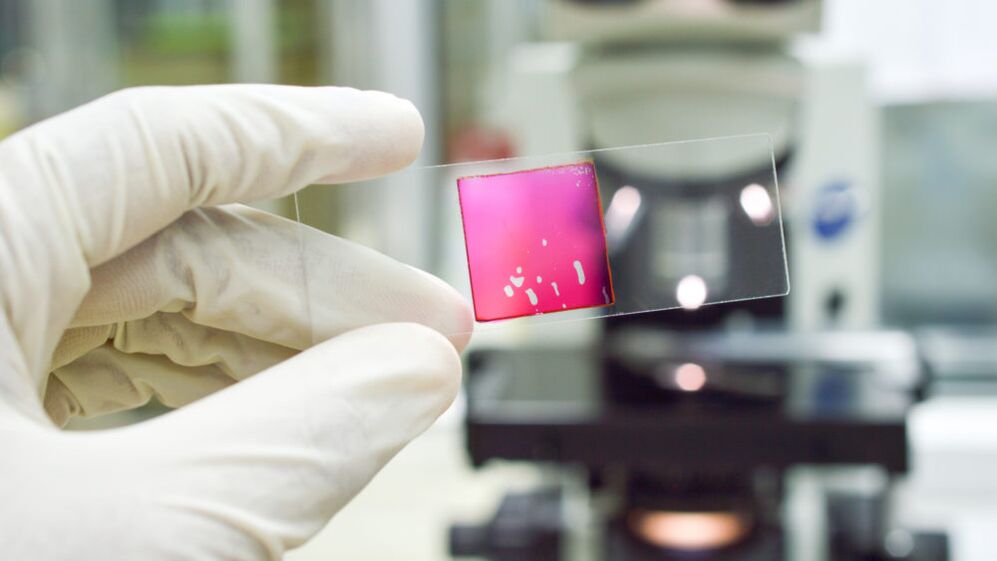
Histological examination
This is an advanced diagnostic method. It is prescribed to a woman when positive screening results are obtained: cytological analysis shows 3-4-5 class of cells. A piece of tissue obtained as a result of a biopsy is examined under a microscope.
The study allows us to identify cells specifically modified by the virus - koilocytes and dyskeratocytes, as well as cells with signs of malignancy. Thus, histology makes it possible to determine the degree of neoplasia and to identify cancer in the early stages, when it can be successfully treated.
In some cases, tissues taken from neoplasms on the skin and mucous membranes are submitted for histological analysis if there are doubts about their nature and good quality.
Treatment of PVI
In the latent stage of PVI, no treatment is required. The detected infection becomes only an occasion for observation over time. It is worth noting that it is impossible to kill the virus in the body with drugs, since it replicates inside the cells.
An infected person is advised to:
- avoid factors that reduce immunity, take vitamins;
- recover from concomitant sexually transmitted infections, if any, do not develop chronic diseases;
- lead a healthy lifestyle, give up bad habits;
- have sex with a steady, trusted partner.
Treatment of the human papillomavirus begins with the stage of subclinical manifestations. It is conservative at this stage. Immunomodulatory therapy is usually prescribed. For this purpose, preparations of human interferon or its inducers are used.
Non-specific immunomodulators are also effective against HPV. Antiviral drugs are used.
Doctors often prescribe topical medications at the same time - ointments, gels and creams.
important!
Immunomodulatory treatment is prescribed only by a doctor based on the results of the immunogram, uncontrolled use of drugs can lead to the opposite result - a malfunction of the immune system.
At the third stage, radical methods are included in the treatment scheme. You can get rid of genital warts, papillomas and warts using the following methods:
- chemical removal with cauterizing drugs;
- radio knife;
- electrocoagulation;
- laser destruction;
- cryodestruction.
The same methods are used in the treatment of benign pathologies of the cervix.
Surgical removal of tissue is indicated for diagnosed cervical cancer. In this case, the woman is treated and monitored by an oncologist.
Since PVI is often combined with other sexually transmitted infections, antibacterial, anti-inflammatory and other drugs may be prescribed.
Vulgar warts can be removed at home using mummifying agents sold in pharmacies.
Treatment prognosis
Contrary to the belief that the virus remains in the body forever and a complete cure is impossible, doctors give favorable forecasts. Usually, after a course of therapy, which is developed individually, taking into account the oncogenicity of the virus and concomitant diseases, the infection recedes.
Relapses occur but are relatively rare if treatment is not interrupted. Some people experience one relapse, sometimes several, but shorter and weaker. Constant exacerbations are characteristic only for people with a long-term decrease in immunity due to HIV infection or serious chronic diseases.
Prevention of PVI
Prevention measures are divided into general and specific. General recommendations to avoid infection:
- use barrier methods of contraception;
- have sex with a regular partner;
- do not start sexual activity before the age of 18, because in adolescents the immune system is not yet fully formed;
- Avoid artificial termination of pregnancy.

So far, there is only one specific method of prevention - vaccination. Today it is possible to vaccinate against types 6, 11, 16 and 18 of the virus. Vaccination takes place in three stages, it is best to start vaccination in adolescence - from 9-10 years.
Reviews from patients
- "I had condylomas, I didn't know about them, " said the gynecologist after the examination. I immediately asked if we would delete it, I agreed. Then she prescribed an antiviral drug for me and my husband. Expensive, but we decided: to undergo treatment until the end. I didand baths with chamomile, string, and calendula. Everything has been clean for two years now. "
- "Doctors have different attitudes towards treatment. I was diagnosed with dysplasia grade 1 and HPV type 18. A doctor told me - just cauterize, otherwise there will be cancer later. Another said there is no need to treat anything before 30, especially before giving birth. He only prescribed pills and suppositories. A year later the virus was still in the analysis, but two years later it was gone and the cervix was normal. But after 30, as the second doctor told me, the body no longer recovers itself.















